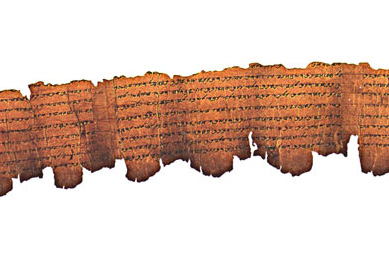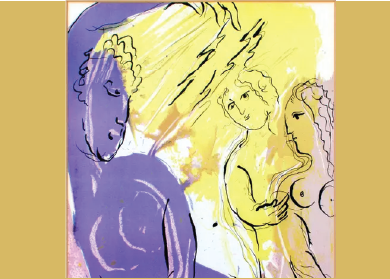“The Lord is king, he is robed in majesty” (Ps 93:1). The image of God as king does not surprise us. It fits well with the other male images for God that we are familiar with from the Hebrew Bible. God is portrayed as king, as warrior (Isa 42:13), as father (Ps 103:13), and even as husband (Isa 54:5). These images often lead to the conclusion that the ancient Israelites imagined their god as being a male deity. If we take a closer look, though, we see that the biblical authors’ presentation of the gender of God is more complicated than that. First, the Hebrew Bible also uses female images as well as gender neutral or gender ambiguous images. Second, gendered images do not necessarily gender the deity.
What is a gendered image, and which female images does the Hebrew Bible use for God?
A gendered image is a metaphor or simile that draws on or evokes gendered experiences. “We are the clay, and you [God] are our potter” (Isa 64:8). “God our potter” is a gender ambiguous image, reflecting gender ambiguous (or gender inclusive) experiences since we know both men and women did pottery work in ancient Israel. The image of the potter could therefore construct a male, female, or gender-neutral image of God.
The authors of the Hebrew Bible on occasion used female images to portray their deity. In Isa 42:14, God compares god-self to a woman in labor: “For a long time I have held my peace, I have kept still and restrained myself; now I will cry out like a woman in labor.” Most of the female images for God can be found in the book of Isaiah, but they do appear in other parts of the Hebrew Bible as well (for example, Ps 22:9-10 and Deut 32:18). In the book of Isaiah, God is portrayed as a woman in labor (Isa 42:14), a woman carrying the people in her womb (Isa 46:3), a breastfeeding woman (Isa 49:15), a midwife (Isa 66:9), and a mother (Isa 66:13). As these examples show, the female images for God are almost exclusively connected to the process of giving birth and being a mother. One criticism of these images has been that even though they are drawing on specific female experiences, these experiences are not shared by all women. The images are also essentialist in the way that women are represented mostly through the functions of their bodies. This is true. On the other hand, motherhood, birth giving, and midwifery were highly valued roles in ancient Israel, and thus, they construct positive and powerful images of female gender. These images are the ones used to portray the God of Israel.
But I thought God was beyond gender?
Most of the anthropomorphic images for God in the Hebrew Bible are gendered images: gendered male, female, or gender ambiguous. These images presumably constructed male, female, and gender ambiguous concepts of God for the ancient Israelite, the same way they do for us. When a biblical text compared God to a breastfeeding woman, this presumably made the listener think of God more like a woman. But does this say anything about the actual gender of God? The gendered images of God in the Hebrew Bible do not necessarily reflect a gendered deity. The mixture of male, female, and gender ambiguous images for God could indicate that none of them were seen as literally reflecting the gender of God as they construct images of God and deconstruct them at the same time. Alongside the images used to speak of God (the only way the Hebrew Bible can describe the deity), we find statements claiming that God cannot be compared to anything or anyone: “To whom will you liken me and make me equal …?” “I am God, and there is no one like me” (Isa 46:5, Isa 46:9). This also sets the deity outside of conventional gender constructions. Additionally, some of the Hebrew Bible’s authors strongly argue that God should not be depicted in any form: “Since you saw no form when the Lord spoke to you at Horeb out of the fire, take care and watch yourselves closely, so that you do not act corruptly by making an idol for yourselves, in the form of any figure—the likeness of male or female” (Deut 4:15-16). The logic is that since God has no form, God cannot be captured in any image, male, or female.
Bibliography
- Carvalho, Corrine L. “Whose Gendered Language of God?” CurTM 43 (2016): 12–16.
- Claassens, L. Juliana M. “Rupturing God-Language: The Metaphor of God as Midwife in Psalm 22.” Pages 166–75 in Engaging the Bible in a Gendered World: An Introduction to Feminist Biblical Interpretation in Honor of Katherine Doob Sakenfeld. Edited by Linda Day and Carolyn Pressler. Louisville: Westminster John Knox, 2006.
- Trible, Phyllis. “Depatriarchalizing in Biblical Interpretation.” JAAR (1973) 41:30–48.
- Levinson, Hanne Løland. “The Never-Ending Search for God’s Feminine Side: Feminine Aspects in the God-Image of the Prophets.” Pages 293–306 in Prophecy and Gender in the Hebrew Bible. Edited by Irmtraud Fischer and L. Juliana M. Claassens. BW 1.2. Atlanta: SBL Press, forthcoming.




